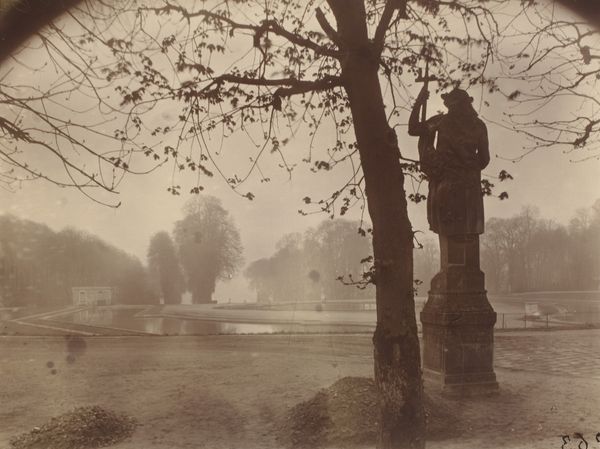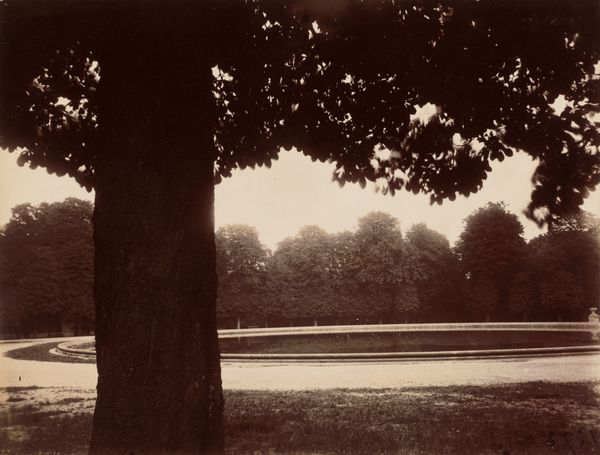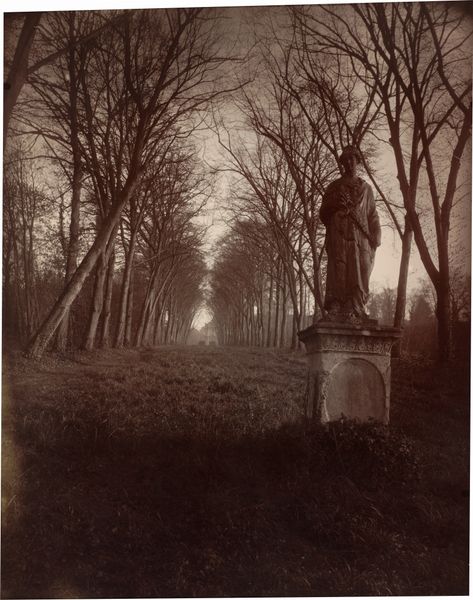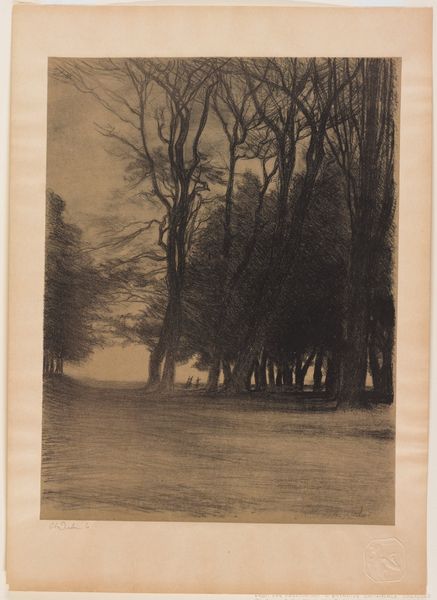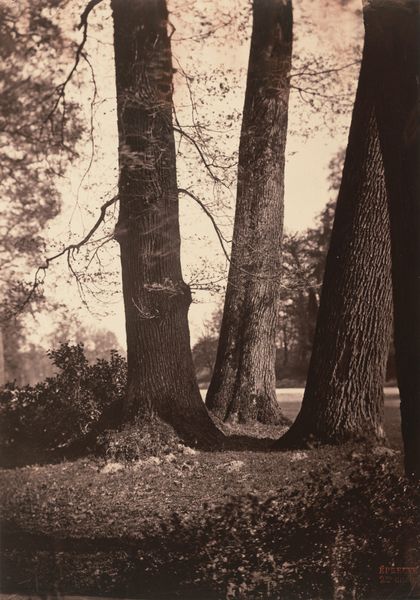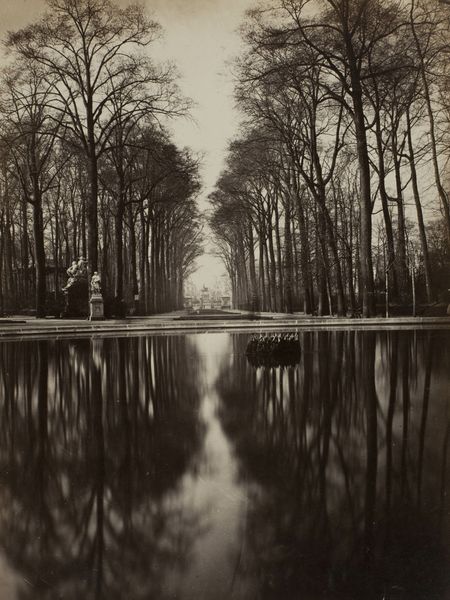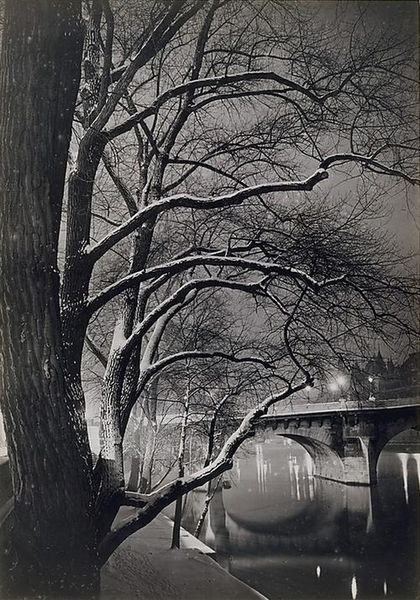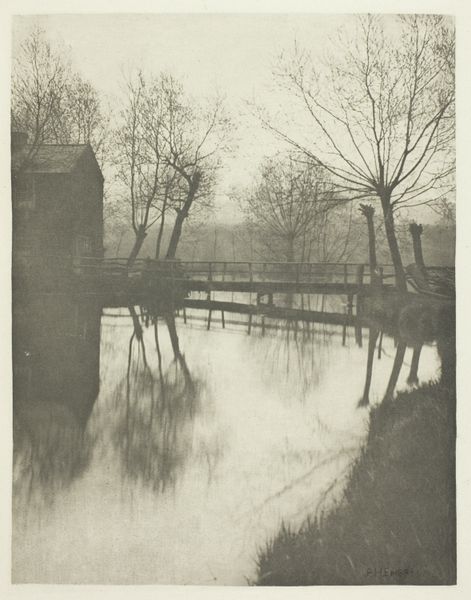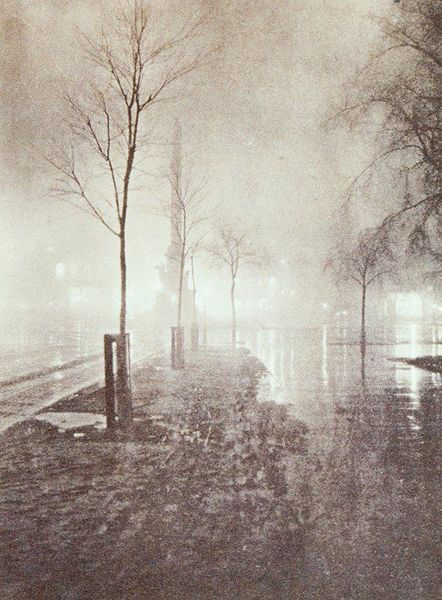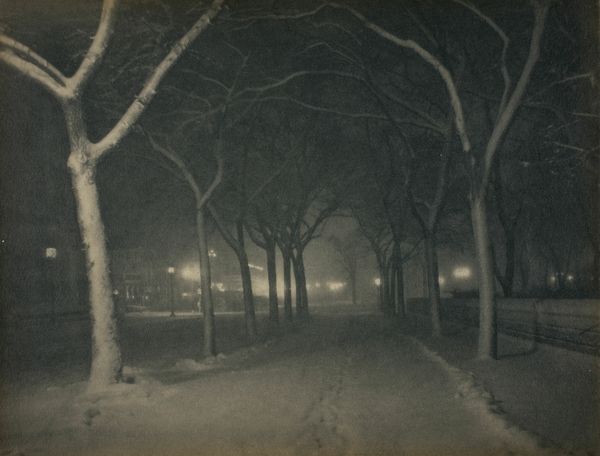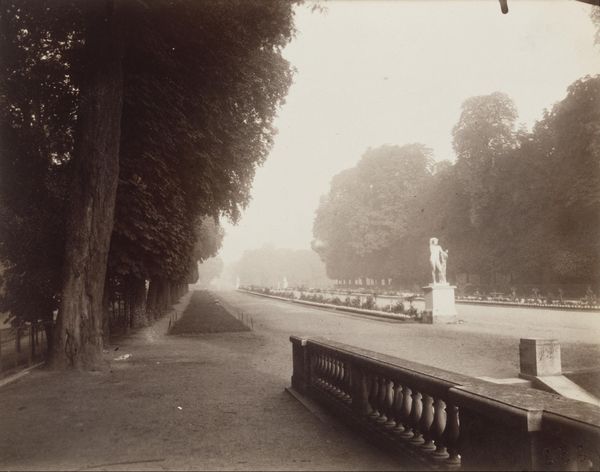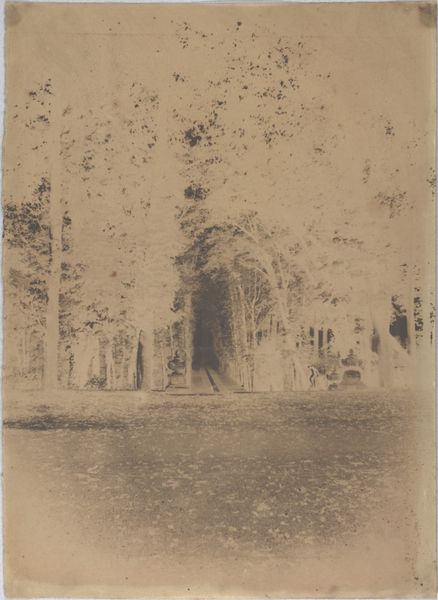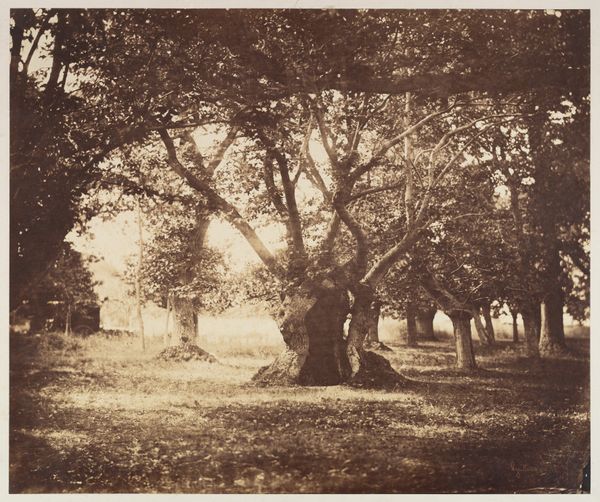
photography
#
pictorialism
#
landscape
#
photography
#
fog
#
cityscape
#
watercolor
#
realism
Dimensions: overall: 22.2 x 18.1 cm (8 3/4 x 7 1/8 in.)
Copyright: National Gallery of Art: CC0 1.0
Curator: There’s something ghostly and evocative about this Eugène Atget photograph. "Saint-Cloud," taken in 1926. What is your first impression of it? Editor: Haunting is the word that comes to mind. It's soft-focus and sepia-toned, like looking at a memory fading around the edges, specifically a colonial, white memory. Curator: Absolutely, the image uses photography, and feels like an echo of a past era. Atget, of course, meticulously documented the changing face of Paris and its surroundings. He did want to document as much architecture before Haussmann's reconstruction projects altered Paris forever. Editor: And within this act of documentation, we see encoded a social agenda: these formal gardens represent leisure and the ruling classes that owned them; Atget is archiving symbols of social hierarchy. I think his approach can reveal those power structures. Curator: Precisely, Atget understood the cultural weight of imagery, consciously working to preserve cultural memory. In the gardens of Saint-Cloud, what do the statues themselves speak? Is that figure posed beneath the boughs some sort of mythological symbol, frozen in stone? It seems caught between worlds, doesn’t it? Editor: That frozen quality definitely reflects how the elite seek to halt the progress of history and entrench themselves through physical permanence in stone, but what I also see, thanks to Atget's atmospheric focus, is the quiet fog softening it. Even these supposedly 'timeless' assertions are fragile. Curator: Yes, that interplay is powerful here. The fog suggests a sense of transition, change on the horizon. Look at the tree in the right corner, its branches reach into the frame as though trying to touch the statue as they struggle upward for the sun. Are we looking at the last gasp of the ancien regime? Or nature claiming her territory slowly but inexorably. Editor: That reminds me of current discussions around climate change and heritage conservation; are these monuments able to survive what is happening to the planet? Who deserves conservation? It speaks volumes that an image of leisure can incite concern now when so many other cultural achievements rot under neglect every day. Curator: So, Atget gives us, with a foggy atmosphere, more than just documentation— he gives us an elegy to this lost grandeur, yes? One that hints at coming revolutions both cultural and ecological? Editor: Definitely! For me, Atget offers more questions than answers. It's that haunting quality, again. And in confronting it, we expose layers of social consciousness about class, empire, and what will come next.
Comments
No comments
Be the first to comment and join the conversation on the ultimate creative platform.
